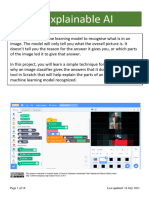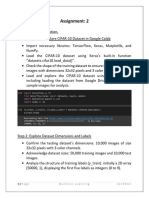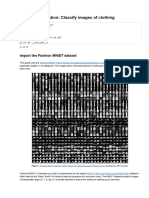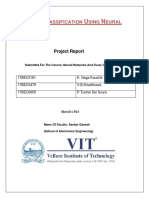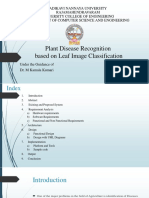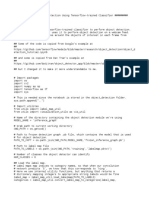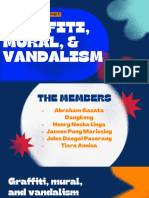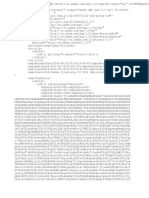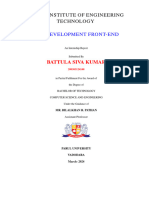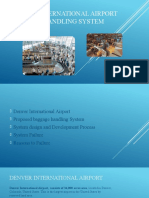0% found this document useful (0 votes)
158 views9 pagesProject Report (Minor Project)
The document describes a project to create a machine learning model for the rock-paper-scissors game using Teachable Machine. It includes:
1) Code snippet of a JavaScript model that loads the trained model and uses a webcam to make predictions.
2) Details on converting the model to Keras .h5 format to make predictions on single images.
3) A shareable link and downloaded zip file of the trained Teachable Machine model.
Uploaded by
HDKHCopyright
© © All Rights Reserved
We take content rights seriously. If you suspect this is your content, claim it here.
Available Formats
Download as DOCX, PDF, TXT or read online on Scribd
0% found this document useful (0 votes)
158 views9 pagesProject Report (Minor Project)
The document describes a project to create a machine learning model for the rock-paper-scissors game using Teachable Machine. It includes:
1) Code snippet of a JavaScript model that loads the trained model and uses a webcam to make predictions.
2) Details on converting the model to Keras .h5 format to make predictions on single images.
3) A shareable link and downloaded zip file of the trained Teachable Machine model.
Uploaded by
HDKHCopyright
© © All Rights Reserved
We take content rights seriously. If you suspect this is your content, claim it here.
Available Formats
Download as DOCX, PDF, TXT or read online on Scribd
/ 9















